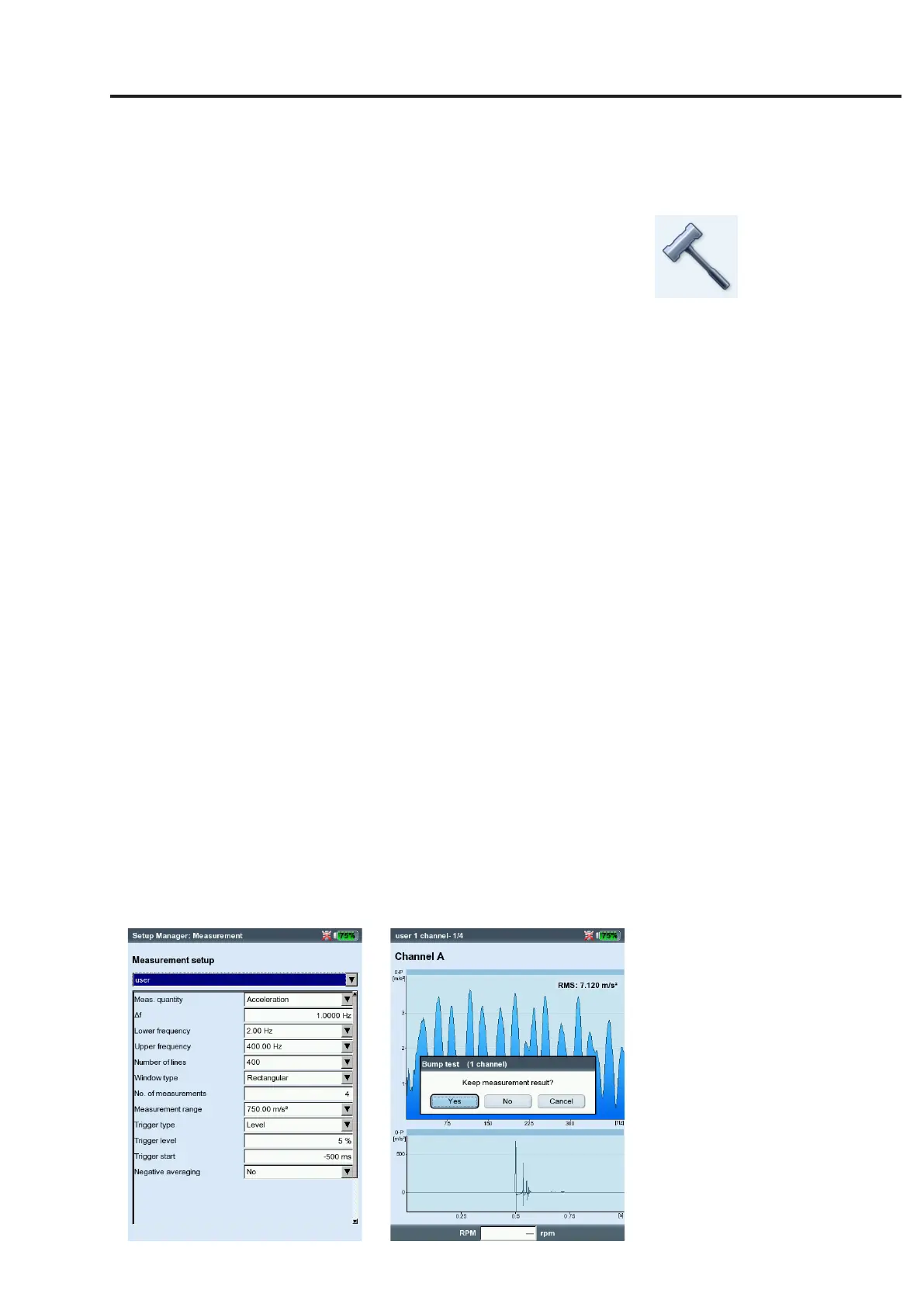5-25
VIBXPERT II 05.2012
Measurement tasks
Impact test - 1 channel
The Impact test is used to determine the resonance frequency of a
structure. In the case of a rotating machine, it is possible to determine
the RPM ranges in which vibrations are disproportionately amplified
by resonance* and could damage the machine. These ranges must
then be avoided during operation and should be passed through as
quickly as possible during runup and coastdown of the machine.
The one-channel impact test only records the system response. The
two-channel impact test also records the excitation.
Almost any source of vibration that contains as many frequencies as
possible is suitable for exciting a structure - such as a pulse-blow with
a rubber hammer.
• Checkandchangethemeasurementparameters,ifnecessary.
The measurement can take place with the machine running or at a
standstill. The signals from a running machine can be filtered out
using the so-called 'negative averaging method'.
• Attachthe transducertothemachine- eitherwithamagnetor,
even better, with a screw fitting.
• Setthenumberofindividualmeasurementsinthemeasurement
setup (e.g. 2 measurements, see below).
• Startthemeasurementbyclickingonthetaskicon(seeabove).
• Whenthemessage'Waitfortrigger'appears,excitethemachine
withasuitablerubberhammer:Strikeneartoandinthedirection
of the transducer once per measurement.
• Foreachsinglemeasurement,strikeexactlythesamelocationonce
with the hammer.
After each single measurement, the result can be accepted or dis-
carded (see below). After all measurements have been completed, the
averaged final result appears together with the 10 highest amplitudes
in the spectrum.
* e.g. excited by an imbalance or mis-
alignment
Left:
Setup parameters for impact test
Trigger Start < 0 : Signal is also recorded
before the excitation
Right:
Measurement after hammer strike
Spectrum with resonant frequencies and
measured time signal
Impact test

